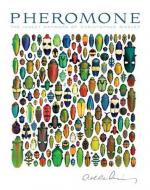|
This section contains 498 words (approx. 2 pages at 300 words per page) |

|
Pheromones are a specific type of chemical signal in which substances are produced by one organism that conveys a message to another organism usually of the same species. These intraspecific signals are of a specific composition, produced by special exocrine glands, and released at specific times to inhibit or stimulate specific biological functions in other organisms. Pheromones are released outside of the organism's body to coordinate behavioral and physiological activities among individuals of the population. This is in contrast to hormones which are internally-released chemicals that regulate body metabolism. Pheromonal communication is widespread among animals and microorganisms, but has been most extensively studied in insects and vertebrates.
Pheromones that directly influence behavior by stimulating an immediate change in behavior are termed releasers. In contrast, primer pheromones stimulate a long-term physiological effect that later influences a behavioral response. For example, a female moth may produce an airborne chemical mixture...
|
This section contains 498 words (approx. 2 pages at 300 words per page) |

|


